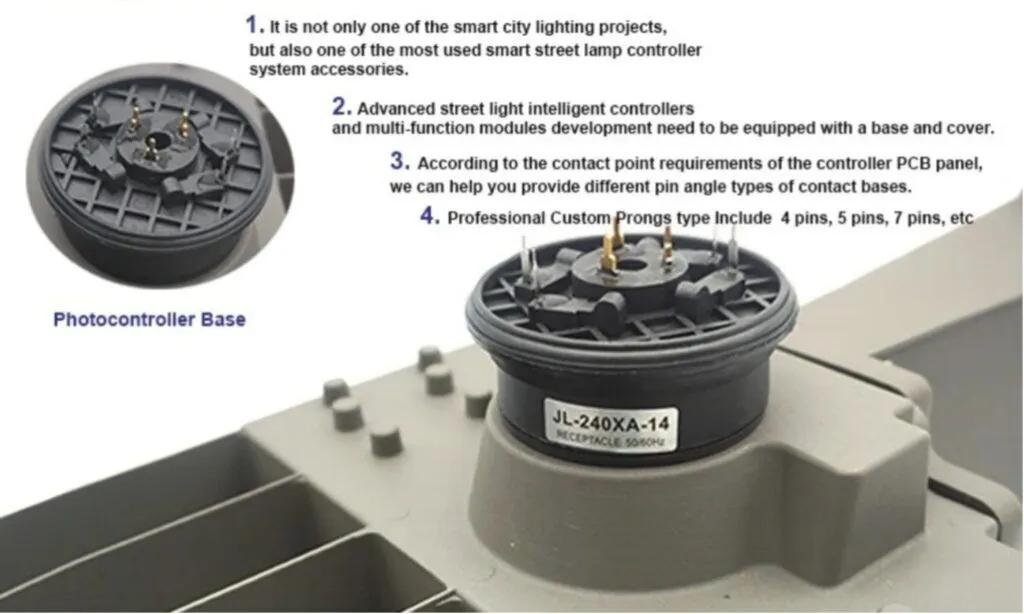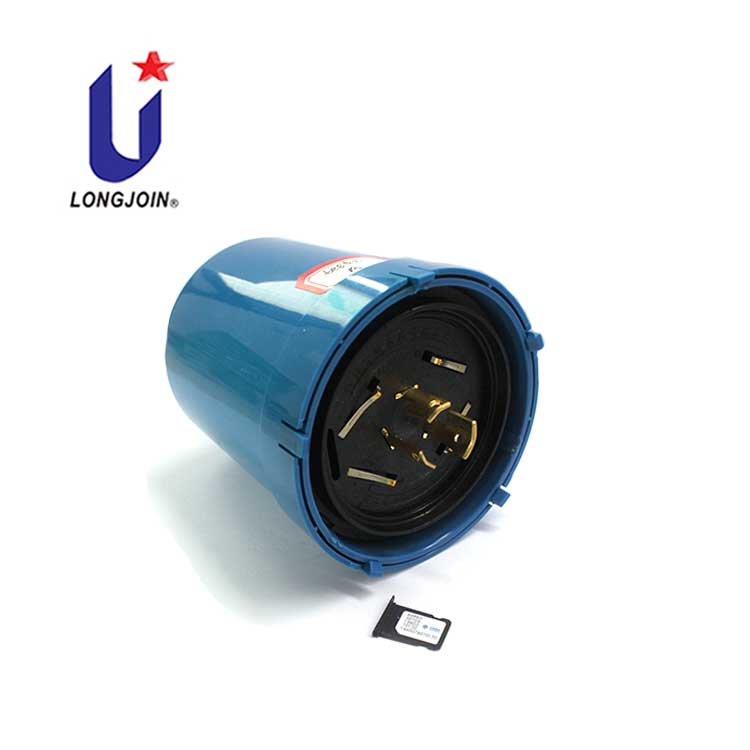Outline
- Introduction
- Integration of Photocells in Smart City Projects
- Case Studies: Energy Savings Through Photocell Implementation
- Copenhagen: Leading in Smart Lighting
- Barcelona: Urban Transformation
- Singapore: Cutting-edge Smart Infrastructure
- Return on Investment (ROI) for Photocell-based Lighting
- Impact on Urban Safety and Aesthetics
- Balancing Bright Urban Environments with Dark Sky Policies
- Photocells Within IoT-Connected Lighting Systems
- Integration with IoT Networks
- Smart Sensors and Automated Controls
- Creating Dynamic, Adaptive Lighting Systems
- Future Trends: Photocell Technology in the Smart Cities of Tomorrow
- The Bottom Line
Photocells are revolutionizing the landscape of urban lighting. Their smart adaptive systems respond to real-time environmental conditions that can significantly reduce operational costs and energy wastage by regulating streetlight operations based on daylight levels.
Smart city infrastructure leverages photocells to enhance night-time safety, improve public aesthetics, and create more livable urban environments. By integrating photocells into IoT-based lighting systems, cities can ensure that lighting is deployed only when and where it’s needed, reducing light pollution and supporting a greener, safer urban landscape.
This article will further discuss the role of photocells in orchestrating urban nightscapes.

Integration of Photocells in Smart City Projects
Smart cities rely on adaptive technologies like photocells to optimize lighting infrastructure. Photocells, light-sensitive devices that detect ambient light levels, are integrated into city-wide lighting systems to automatically control streetlights, building facades, and public space illumination.
These sensors adjust lighting automatically depending on the amount of natural light available, thereby minimizing manual involvement and promoting energy conservation. Usually, photocells are combined with motion sensors and IoT networks as part of smart street lighting projects, which result in responsive lighting grids. For instance, photocells in streetlights switch on at dusk and off at dawn, while motion sensors can dim lights when no person is moving around hence saving more energy.
Cities like Barcelona and Los Angeles have incorporated photocell-based lighting into their urban renewal projects, showcasing significant energy savings, enhanced public safety, and reduced maintenance costs.
Case Studies: Energy Savings Through Photocell Implementation
Photocells enable precise control of when the street lights should turn on and off according to ambient light conditions, thus eliminating unnecessary expenses associated with electricity use. The smart lighting initiatives of Copenhagen, Barcelona, and Singapore are vital testament to this. Below discussed are the details of these projects.
Copenhagen: Leading in Smart Lighting
Copenhagen is a standout example, having invested €34 million in smart street lighting systems. These systems utilize photocells to reduce energy use while maintaining safety and visibility.
As part of their smart city strategy, Copenhagen’s adaptive lighting has resulted in a socio-economic gain of €600 million by optimizing energy use in public spaces, cutting down costs while enhancing sustainability.
Barcelona: Urban Transformation
Barcelona has implemented LED-based lighting with integrated photocells, reducing energy consumption and heat output. This approach has enabled the city to not only cut down on electricity costs but also to create dynamic lighting that responds to environmental conditions.
The transition to smart lighting is part of Barcelona’s broader efforts to become a zero-emissions city, a critical goal of their smart city initiative.
Singapore: Cutting-edge Smart Infrastructure
Singapore’s intelligent lighting system incorporates photocells to manage lighting in high-traffic public spaces. This has significantly reduced energy costs while ensuring public safety.
The government has reported a sharp reduction in electricity usage and a move toward achieving greater sustainability as part of their broader Smart Nation framework.
Return on Investment (ROI) for Photocell-based Lighting

The ROI for cities transitioning to photocell-based lighting systems can be substantial. For example, Copenhagen’s integration of intelligent street lighting is expected to deliver a payback period of fewer than 10 years due to the savings on energy and maintenance.
Although it is expensive in the beginning, the compensation through low electricity bills, fewer carbon emissions, and decreased maintenance costs will offset the upfront costs and will result in long-term financial advantages.
Impact on Urban Safety and Aesthetics
Photocell-controlled lighting plays a vital role in improving urban safety. It ensures consistent and well-timed illumination in key areas like streets, parks, and public spaces. This enhanced lighting reduces dark zones, increasing visibility, which directly helps lower crime rates and prevent accidents.
It has been suggested by research studies that in areas where there is sufficient light illumination, crime rates are likely to decrease because the chances of offenders being seen are high since such regions can easily be surveyed. Related to this is the Crime Prevention Through Environmental Design (CPTED) strategies which advocate for good lighting as one way of reducing crime and enhancing public safety during night hours.
Beyond safety, photocells also contribute significantly to the aesthetic of urban nightscapes. In cities such as London and Paris, photocell-based systems are employed to illuminate bridges, buildings, and cultural landmarks with energy-efficient, adaptive lighting schemes, enhancing the city’s visual identity while minimizing unnecessary light during low-traffic hours.
Balancing Bright Urban Environments with Dark Sky Policies
While brighter streets improve safety, excessive lighting contributes to light pollution. To address this, many cities are adopting “dark sky” policies. These policies aim to reduce skyglow and preserve natural night environments.
Photocells play a crucial role in this effort by dimming or shutting off non-essential lights when areas are less populated, thus achieving a balance between maintaining safety and reducing environmental impact.
Photocells Within IoT-Connected Lighting Systems
Photocells play a crucial role in IoT-based urban lighting networks. They enable real-time monitoring and management of city-wide lighting infrastructure. Here is the detailed discussion.

Integration with IoT Networks
Photocells, when connected to IoT platforms such as Cisco Kinetic or IBM’s Watson IoT, provide continuous data on light levels. This allows city administrators to monitor and manage lighting across entire districts.
These systems work by using cloud-based platforms that aggregate data from photocells and other sensors, enabling city officials to make informed decisions about where and when to adjust lighting levels.
Smart Sensors and Automated Controls
Photocells can be integrated into smart cities with an array of additional sensors, for instance, PIR motion sensor (Passive Infrared) or LIDAR (light detection and ranging) sensors.
Hence, a combination of PIR and photocells can serve as a control mechanism for dimming or brightening streetlights based on the level of ambient light and human activity. Adaptive traffic signal control is another technology commonly paired with photocells; it involves using sensors to determine traffic flow and correspondingly adjust lighting levels.
There are several platforms that assist in managing such systems including Schneider Electric’s EcoStruxure which eases energy-efficient urban lighting administration and Telensa’s PLANet which allows remote command over streetlights through a combination of photocells and sensors.
Creating Dynamic, Adaptive Lighting Systems
Streetlights equipped with photocells can be programmed to dim at times of little vehicular movement or calibrate their brightness in relation to adverse weather such as fog or rain.
In London, the SCOOT (Split Cycle Offset Optimization Technique) system integrates photocells with traffic sensors that adjust streetlight brightness according to actual vehicle movement resulting in reduced power consumption for non-traffic periods and still keeping it safe.
Future Trends: Photocell Technology in the Smart Cities of Tomorrow
Photocell technology is rapidly evolving to meet the demands of smarter cities. Emerging innovations include multi-spectral sensing. This enables photocells to detect various wavelengths of light, optimizing energy use across different lighting conditions. This innovation allows for greater precision in controlling artificial light based on natural light variations throughout the day.
AI-driven automation is also transforming photocell use. By combining photocells with machine learning algorithms, cities can predict lighting needs based on historical data and environmental patterns, leading to further efficiency improvements.
Future systems will increasingly integrate with renewable energy solutions, such as solar-powered streetlights, where photocells can regulate energy storage and consumption. As cities adopt net-zero strategies, these intelligent, adaptive lighting systems will become a cornerstone of urban infrastructure, contributing to sustainable, low-emission environments.
The Bottom Line
Photocells are essential for creating energy-efficient, adaptive, and aesthetically pleasing urban lighting systems, driving smart city innovations worldwide. As cities continue to evolve, photocell technology will play an even greater role in achieving sustainability and safety goals. For reliable photocells and advanced lighting solutions, Chi-Swear offers top-quality products tailored to meet the needs of smart urban infrastructure projects.
External Links
- https://stateofgreen.com/en/news/connecting-copenhagen-is-the-worlds-best-smart-city-project/
- https://ajuntament.barcelona.cat/ecologiaurbana/en/services/the-city-works/maintenance-of-public-areas/energy-management/street-lighting-management
- https://www.ledinside.com/news/2017/1/singapore_aims_to_convert_all_roads_to_smart_led_streetlighting_systems_by_2022
- https://menlopark.gov/Government/Departments/Police/Crime-safety-and-prevention/Crime-Prevention-Through-Environmental-Design
- https://darksky.org/what-we-do/advancing-responsible-outdoor-lighting/public-policy
- https://internetofthings.ibmcloud.com
- https://www.sciencedirect.com/topics/computer-science/passive-infrared-sensor
- https://en.wikipedia.org/wiki/Lidar
- https://en.wikipedia.org/wiki/Split_Cycle_Offset_Optimisation_Technique






